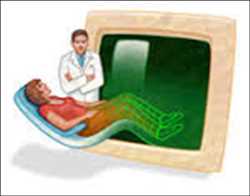Dataset That Connects Human Neural Vision And Machine Learning

Neuroscientists and computer vision researchers believe a new series of data of unprecedented magnitude including brain images from four volunteers viewing 5,000 images each helps researchers better understand how the images are processed by the brain.

Researchers at Fordham University and Carnegie Mellon University reported in Scientific Data that the acquisition of functional magnetic resonance (fMRI) scanners on this scale presented unique challenges.
Each volunteer participated in at least 20 hours of MR analysis, tested their perseverance, and the researchers’ ability to coordinate the screening sessions. The extreme decision to allow the same people to exceed the number of sessions needed to unknot the neural responses connected with individual images.
The resulting data set, BOLD5000, allows cognitive neuroscientists to make better use of deep learning models with radically improved artificial vision systems. Originally inspired by the architecture of the human visual system, in-depth learning can be enhanced by deepening understanding of how human vision works and by ensuring that your studies better reflect modern visualization methods. For this, the BOLD5000 measured the neural activity resulting from the visualization of images from two common data sets of computational vision; COCO and ImageNet.
“The interconnection of brain science and computer science shows that scientific innovation can be made in both directions,” said co-author Michael J. Tarr, Professor Kavci Mura of cognitive and cerebral sciences and head of the department of psychology of CMU. “Future vision research using the BOLD5000 database should help neuroscientists better understand the organization of knowledge in the human brain. The more we discover about the neural basis of visual recognition, the better we will be contributing to the advancement of artificial vision.”
In addition to Chang, Aminoff, Gupta, and Tarr, the research team included John A. Pyles, senior scientist and director of scientific operations at CMU-Pitt BRIDGE, and Austin Marcus, a research assistant at Tarr’s laboratory.


